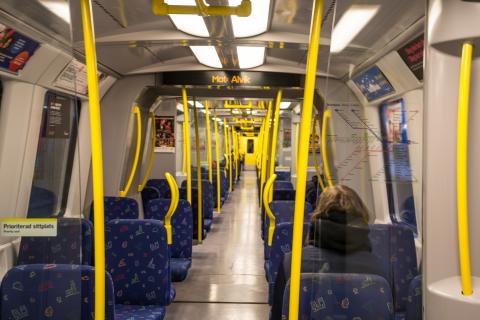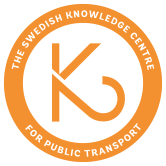Article highlighted
Best strategy for reducing passenger transport energy use

Jeffrey Kenworthy from Frankfurt University of Applied Sciences and Helena Svensson from Lund University have investigated the potential to save transport energy in ten Swedish cities through different strategies in private, public and non-motorized modes.
— By looking at factors such as per capita energy use, we have compared the ten Swedish cities with each other and with cities globally in order to calculate the transport energy conservation potential through five scenarios, says Helena Svensson.
The most successful scenario for reducing passenger transport energy use is to double the current seat occupancy of each public transport mode in each city, the study shows. Most energy can be saved if this scenario is combined with increasing the percentage of daily trips by non-motorized modes, such as cycling and walking, to fifty percent in each city.
— The combined strategy could save energy equivalent to 1183 million liters of gasoline in the ten cities, which is almost a sixty percent saving over their existing 2015 total private passenger transport energy use and equivalent to the combined 2015 total annual private transport energy use of Stockholm, Malmö and Jönköping, Helena explains.
Empty seats in cars on the road can be considered as a wasted resource and initiatives such as high-occupancy vehicle lanes (HOV), van-pooling and car-pooling have been explored as methods to increase car occupancy in many cities around the world. However, the results from the current study indicate that increased car occupancy has a limited impact on energy use. Increasing the public transport seat occupancy seems to be a more effective measure.
— We hope that the results from this study provide inspiration for change, as they clearly show that there are measures cities can take that significantly reduce carbon dioxide emissions, says Helena Svensson.
Six scenarios and ten cities
The data used in the study come from systematic empirical research on ten Swedish cities: Stockholm, Malmö, Gothenburg, Linköping, Helsingborg, Uppsala, Västerås, Örebro, Jönköping and Umeå.
To quantify transport energy conservation potential in the ten cities, six scenarios were created:
(1) Increasing the public transport seat occupancy in each Swedish city to average European levels; (2) Doubling existing seat occupancy in each Swedish city;
(3) Increasing existing car occupancy in each city by 10%;
(4) Decreasing existing energy use per car vehicle kilometer by 15%;
(5) Increasing existing modal split for non-motorized modes to 50% in each city;
(6) A sixth best-case scenario was also constructed by simultaneously combining scenarios 2 to 5.
Read more in the study Exploring the Energy Saving Potential in Private, Public and Non-Motorized Transport for Ten Swedish Cities
Helena Svensson is a researcher at Lund University and Education Manager at K2.
